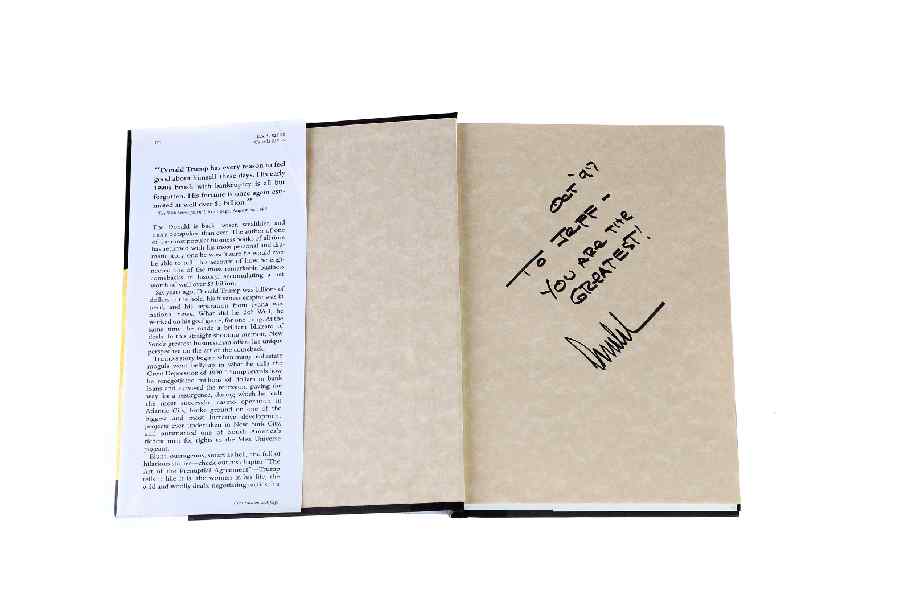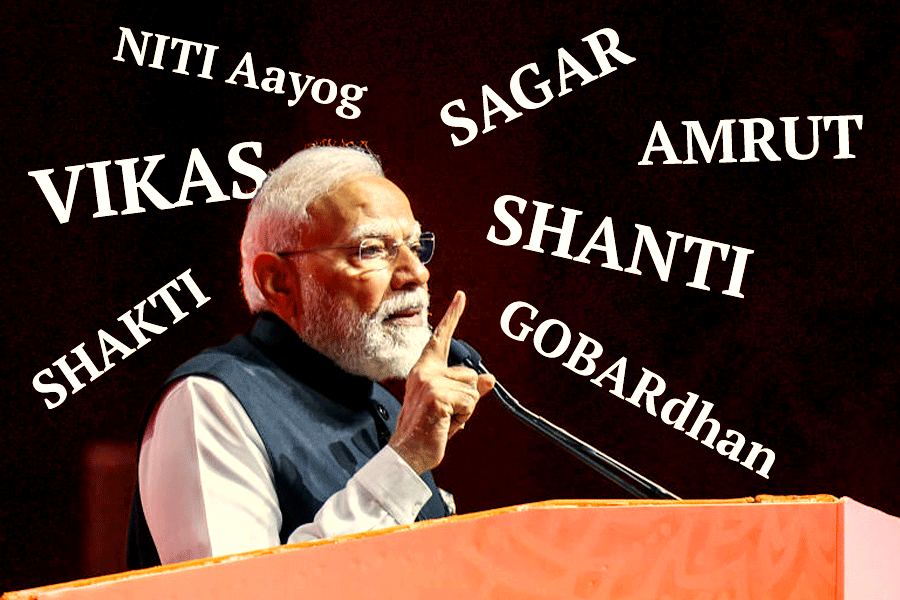|
|
Long before Bhasha Bhavan was built, and National Library was unthinkable without the reading room that stretched from one end of the gracious old building to the other, exhibitions of valuable material in its phenomenal collection used to be held in the passage that led to the grand staircase. Those were such hastily put together affairs that no one looked twice at them. Maybe, they were not meant to be seen.
The exhibition, Tagoreana in the National Library (June 6-17), is nothing like those. Much deliberation has obviously gone into putting it together as it is part of the programme to celebrate the poet’s 150th birth anniversary. A profusion of illustrations, paintings, photographs and portraits, albeit copies, lifetime publications of Tagore’s prose and poetry and some manuscripts rarely, if ever, seen before that have been in the library’s holding since 1961 are on display in the art gallery of Bhasha Bhavan. It is curated by Swapan Majumdar, former director, Rabindra Bhavan, Visva-Bharati, and as far as the books are concerned, the maximum number of those on display were published in the early 20th century by Macmillan And Company, which had a virtual monopoly on Tagore’s English writings during his lifetime. There are others as well, and together they give us an idea of the style and manner in which Tagore preferred to see his work in print.
Rabindranath was interested in printing technology, and was very particular about the way his books were published, the way they looked, the typeface used for the text, illustrations and other nitty-gritty of cover and page design. Anybody who has seen Sahaj Path and Nandalal’s exquisite lithographs and line drawings in it will realize the painstaking care with which Tagore brought out a book meant for the edification and delight of children. The extent of Tagore’s fastidiousness can be gauged from his alleged insistence on the destruction of an entire edition of his Talks in China whose get-up was not to his liking.
While books like Gitanjali (Song Offerings), with an introduction by W.B. Yeats in 1912, Chitra and Sadhana are in what can be described as a classic style, his translation of Songs of Kabir with its rather flamboyant title page touched with blue is a study in contrast. The poet’s portrait by S.K. Hesh accompanies the copy of My Reminiscences. These rarities are displayed in glass boxes with traces of paint splattered on them.
The copies of illustrations, paintings and photographs of Tagore from early youth to ripe old age are exhibited on the crowded walls of the inadequately lit gallery. The material may be valuable, but there is too much of it in so little a space. The organizers should have kept Tagore’s exacting standards in mind while mounting the exhibition. By the way, the ‘décor’, particularly the orchids and the pitchers, could have been happily abandoned.
Nonetheless, some of the material, particularly the manuscripts and at least one photograph, comes as a revelation. Tagore, while translating his poem, “To Siam”, scored out erring phrases and words with his trademark sinuous lines that seem to have a life of their own, justifying his assertion in another manuscript: “I try to make my corrections dance….” Most intriguing is the final signed manuscript of “My Pictures”, a lecture delivered in London on July 2, 1930. He wrote: “in art lines and colours are no carriers of information. They seek their rhythmic incarnation in pictures… It is above all meaning.” The enlarged photocopies of these manuscripts — from a letter to the private secretary of the king of Thailand to the draft of a medical certificate and an attack on sectarianism — displayed on the walls are helpful for visitors.
The section on the portraits of Tagore, both artwork and photographs, is particularly rich. Abanindranath’s ‘Japanese’ watercolour of Tagore, Gandhi and Andrews discussing the Non-cooperation movement crackles with wicked humour (picture). Most startling is Tagore’s self-portrait in pencil with its piercing eyes on the verso of A Chinese friend…. Vinayak S. Masoji’s photograph, on the other hand, taken in Santiniketan in 1941, is a far cry from the sage we are used to seeing. Here, he is a weary old man willing to set aside the burden of life.











